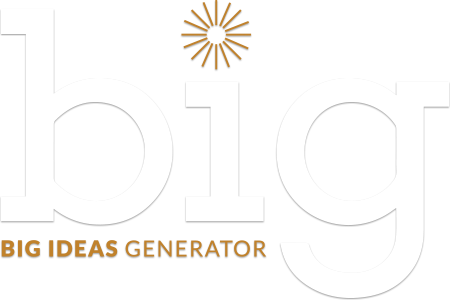
Projects
Check Out Our Latest Funded Projects
Click to learn more about each project

Testing interventions to increase social capital within heterogeneous communities
Experimental Evidence on Social Capital and Group Dynamics
Principal Investigator: Leonardo Bursztyn, Economics
Funding Type: Vision
Big Idea: This project aims to provide the first rigorous evidence on the effect of social capital on governance outcomes and to test interventions to increase social capital within heterogeneous communities. Leveraging a unique setting in New Delhi and a partnership with the ruling party, we create neighborhood "grievance groups" on WhatsApp and randomize their composition along caste, religious, and gender lines. We study whether heterogenous groups, particularly those composed of communities that have historeically been in conflict, are less effective than homogeneous groups in influencing public policy outcomes due to differences in trust and social capital. We then run interventions that increase levels of social capital by emphasizing commonalities between heterogeneous members and assess effects on groups' ability to aggregate political information and advocate for public policy outcomes. Beyond their academic contributions, our findings will have policy implications for governments aiming to use social media to more effectively communicate with constituents and for institutions seeking to reduce conflict between heterogeneous communities. BIG support will enable running several hundred groups through the upcoming 2020 elections, affording enough statistical power to detect the effects of interest.

Transforming embryoid bodies into a renewable source of human cells
No Cell Left Behind: Using Embryoid Bodies to Understand Human Biology
Principal Investigator: Yoav Gilad, Genetics & Medicine
Funding Type: Vision
Big Idea: The pace of genetic discovery is fundamentally limited by access to relevant human tissues. Most human studies are restricted to easily accessible tissues or to post-mortem samples, because it is impossible or unethical to collect most human tissues or cell types. The discovery that mature human cells can be transformed into stem cells was an important step in solving this problem. Stem cells provide a renewable source of human tissue that can, in theory, develop into any cell type. In practice, however, it can take years to discover how to produce any single tissue from stem cells. At the nexus of stem cell biology and emerging single-cell technologies, there is an opportunity to generate and study many, or even most, human cell types simultaneously, all within a single dish. When grown in the proper conditions, stem cells form spontaneously differentiating organoids known as embryoid bodies. Single cell technologies allow us to disentangle these complex organoids, transforming embryoid bodies into a renewable source of a multitude of human cells. Our study will determine whether embryoid bodies can be used to model adult cells. If so, embryoid bodies will transform the paradigm of functional genetics in humans.
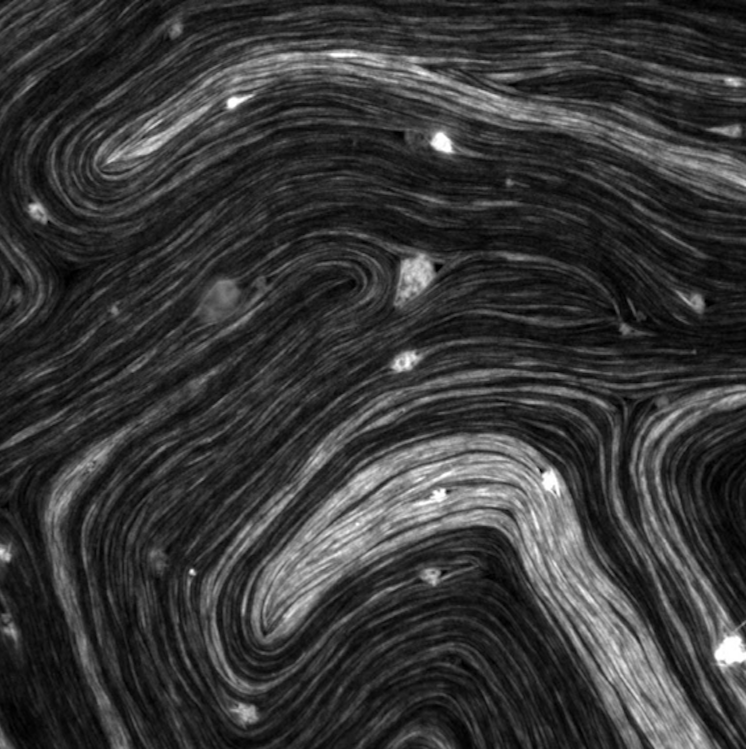
Order and structure formation in classical and quantum materials out of equilibrium
Exploring connections between active nematics and fractional quantum Hall effect
Principal Investigator: Son Dam, Physics
Funding Type: Vision
Big Idea: The proposed research program based on a nascent idea: there exists a deep connection between active nematics and fractional quantum Hall effect that has the potential of changing the way we think about order and structure formation in classical and quantum materials out of equilibrium. Hydrodynamics of active nematics is a blossoming research direction in soft matter physics and a paradigmatic example of classical (non quantum) matter out of equilibrium that typically occurs at room temperature. The Fractional quantum Hall effect, on the other hand, is a quantum effect. At very low temperatures and high magnetic field, an electron gas in two dimensions shows behavior unlike any other fluid: quantized Hall conductivity, excitations with fractional and non-Abelian statistics, etc. There are tantalizing hints that the physics of fractional quantum Hall effect and active nematics may have deep, unexplored similarities. Preliminary work by the two PIs and their teams reveals that the underlying mathematics behind these two hitherto separate fields displays striking similarities. We hope to generalize these initial findings to produce a unified theoretical framework to understand strongly correlated materials out of equilibrium across the classical-quantum divide.

Understanding interactions in semiconducting polymers
Ferromagnetic Semiconducting Polymers-Optical, Electrical and Magnetic Properties
Principal Investigator: Luping Yu, Chemistry
Funding Type: Vision
Big Idea: This big idea proposes a new concept and plan in developing unprecedented, ferromagnetic semiconducting polymers composed of stable diradicals. These diradicals are expected to exhibit a triplet ground state as a consequence of strong spin exchange interactions (J>>An). Synthetic approaches to new monomers containing triplet diradicals are proposed. These monomers will be copolymerized with various electron-deficient monomers to form donor-acceptor (D-A) alternating copolymers. The internal charge polarization existing in D-A structure will dictate the spin alignment direction along the one-dimensional polymer backbone to achieve ferromagnetism in these systems. The introduction of ferromagnetic properties to conjugated polymers will add another dimension to explore new physical properties and related applications. Since the energy gap for spin transitions is much smaller than electronic transitions, spin-based devices can be manipulated faster and require a lower energy input than conventional semiconductor devices. This work is expected to enhance basic understanding of mutual interaction of electrical, optical and magnetic properties in semiconducting polymers. This project will provide us new materials to explore a broad spectrum of scientific fields such as non-volatile memory devices, spin-valves, spin-transistors, spin photovoltaics, magnetic sensors and so on.

Redirecting and remapping touch
Faster Transitioning to a new Body Schema using Wearable Haptics
Principal Investigator: Pedro Lopes, Computer Science
Funding Type: Vision
Big Idea: We will engineer and study how wearable haptic devices can accelerate the embodiment of a worn passive device, such as a prosthetic extension (e.g., chest guard that supports gender transition) or even an accessory (e.g., odd shaped backpack from a bike messenger). The key idea behind our device is that it can redirect and remap touch from the new body part (e.g., the chest guard) to the wearer’s body. Using our device feels similar to tapping our own skin, we feel a tap at our fingertips as they contact the chest guard and an associated tactile impulse at our skin; the latter is generated by the vibrotactile actuators when the tactile sensor embedded in the chest guard detects a touch. This way, users can explore how their bodies might feel after the hormone therapy or surgery. Our project is original in three ways: (1) We explore this effect outside of rehabilitation for amputees and other medical conditions. (2) We propose using it for serving a new segment of the population that is rarely the focus of research prototypes (e.g., those transitioning genders). (3) We engineer a wearable haptic device to achieve redirection with high spatial and temporal fidelity.
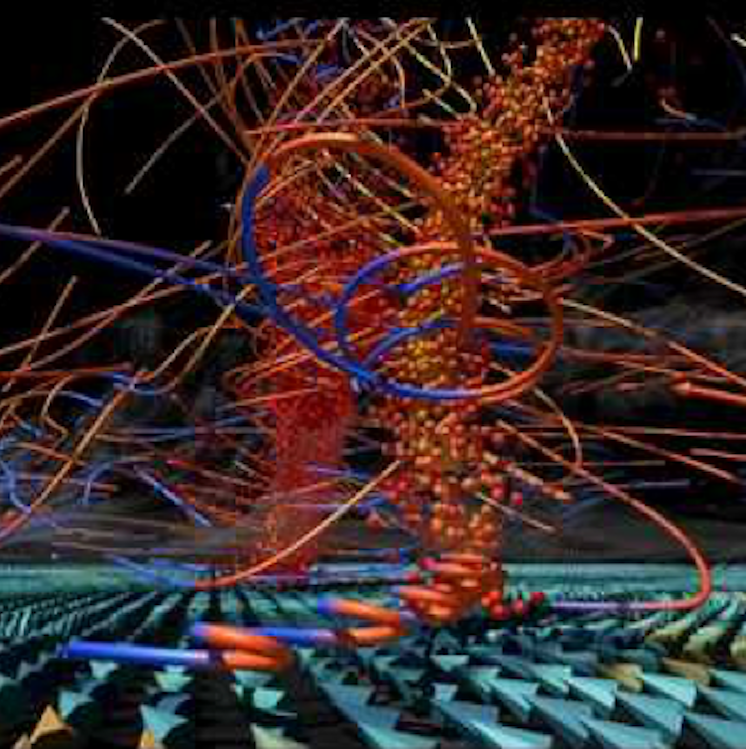
Change the perception of turbulence
Harnessing Turbulence Constructively
Principal Investigator: William Irvine, Physics
Funding Type: Vision
Big Idea: Turbulence is canonically associated with chaotic mixing, destructive forces, and increased entropy. Our big idea is to harness turbulence to do the opposite. By combining turbulence with microscopic particle design, we aim to harness turbulence to extract pollutant particles from fluids and assemble structures in a controlled manner. We will leverage the BIG grant to understand the fundamental forces underpinning the capacity of turbulence to de-mix and assemble. This bold vision, if established, will change the perception of turbulence from a nuisance or obstacle to a resource.

Studying the Great Pyramid’s engineering and construction process
Exploring the Great Pyramid of Giza with cosmic-ray muons
Principal Investigator: Nadinne Moeller, Oriental Institute
Funding Type: Vision
Big Idea: Imaging the interior structure of the Great Pyramid of Giza would transform our understanding of the pyramid’s engineering and construction process, which could in turn allow us to gain insight into ancient Egyptian society itself. However, no man-made radiation can penetrate a structure this large. In 1970 Alvarez first used cosmic-ray muons to investigate the interior of a pyramid. In 2017, the Scan Pyramids team, using the same technique, reported on the discovery of a new very-large void in the Great Pyramid. However, although they used modern equipment, their system was not much larger than the one used by Alvarez's team and produced images of very limited resolution and contrast. Our Big Idea is to use detector technology currently deployed in high-energy physics to field very-large muon telescopes outside of the pyramid. This will allow for a high-resolution, high-contrast study of the internal structure based on tomography algorithms used in medical imaging. The approach will go beyond simply looking for voids, revealing new internal structural details of the pyramid. This work represents a unique collaboration between high-energy particle physicists with expertise in detector design and simulation, medical physicists with expertise in tomographic image reconstruction, and archaeologists specializing in ancient Egypt.
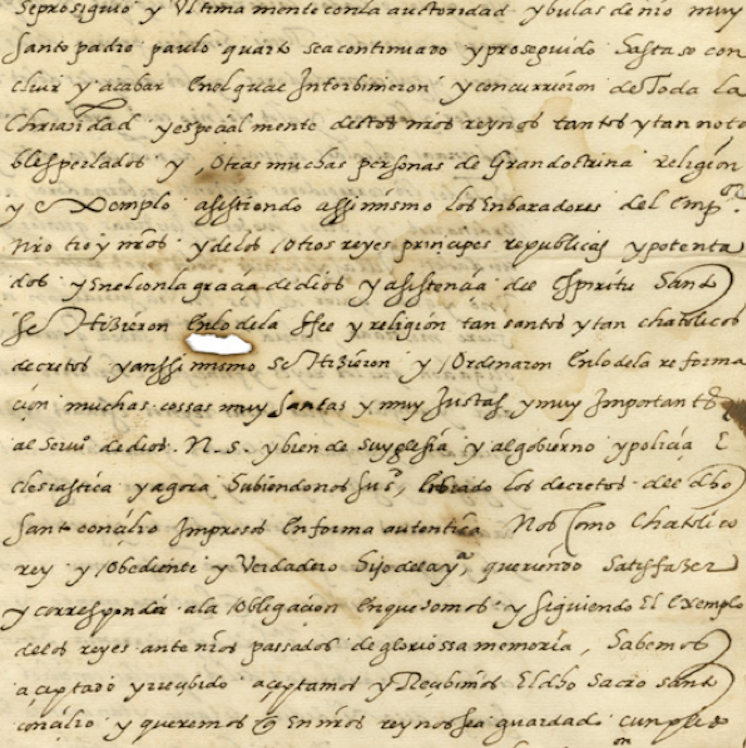
Extending chemical ideas to language
Triangulating Speech across Multiple Social Relations and Institutional Venues: Private Letters in Renaissance Florence
Principal Investigator: John Padgett, Political Science
Funding Type: Seed
Big Idea: This project on private letters in Renaissance Florence empirically develops the idea of “network autocatalysis” beyond its founding application domain of “chemical autocatalysis” (origins of life) and its extensions to “production autocatalysis” (emergence of markets) and “biographical autocatalysis” (emergence of organizational novelty) into the domain of “linguistic autocatalysis.” Padgett (2019) on Faulkner and the two forthcoming papers (2020) on Renaissance republican debate are also products of this extension of originally chemical ideas to language.

Exploring why color perception differs between species
Comparative approaches to understanding color vision
Principal Investigator: Trevor Price, Ecology and Evolution
Funding Type: Seed
Big Idea: Color is one of the more obvious sensory inputs to our daily lives. Over the past 150 years, application of genetic, physiological and behavioral techniques has led to major progress in understanding of how humans perceive color, but many gaps in our knowledge remain. Surprisingly little use has been made of comparisons among species. Birds, as the most color-oriented terrestrial group are excellent model system in which to apply comparative methods. We will study anatomical and physiological correlates of color processing in the retina of >50 bird species and relate that to each species visual inputs (e.g. color of conspecifics). Using fresh retinas, we will document cone cell distributions across the retina and construct opsin gene expression profiles, to study differences between species, sexes, and the right and left eye. We will use these data to expand on models from both the human psychophysical and animal literature to assess how and why color perception differs between species. This research will lead to a deeper understanding of why we see color in the way we do, and how color vision varies across individuals and species.
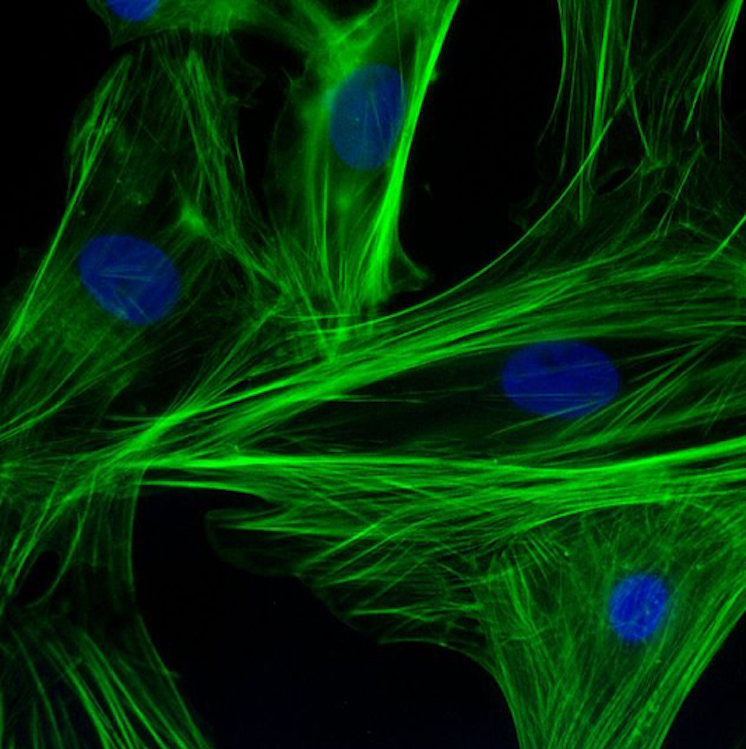
Building in vitro reconstitution platforms
Understanding how mechanical stress organizes actin cytoskeletal architecture
Principal Investigator: David Kovar, Molecular Genetics and Cell Biology
Funding Type: Seed
Big Idea: Cells produce and experience mechanical forces during fundamental processes such as division and motility. These forces are produced primarily by biopolymer networks of actin cytoskeleton filaments (Factin) that are constricted by molecular motors called myosin. Different contractile F-actin networks are assembled through the coordinated action of biochemically diverse actin-binding proteins (ABPs) that collectively regulate actin filament architecture and dynamics. The effect of ABPs on F-actin network organization and dynamics has been extensively studied over many years. However, far less is known about how mechanical forces applied to actin filaments affects ABP recruitment and activity. We hypothesize that forces applied to actin filaments significantly modifies the binding affinity and activity of a subset of ABPs, thereby regulating their recruitment to specific networks. This big idea has not been thoroughly investigated, principally due to technical difficulties of evaluating the effect on ABPs of applying forces to actin filaments. We are taking advantage of our expertise in purification of fluorescently labeled ABPs and single molecule microscopy imaging to build in vitro reconstitution platforms to systematically survey ABPs for differences in their ability to associate with and influence actin filaments in the absence and presence of mechanical stress.

Seeking signatures of the presence of water
Searching for Water in Distant Worlds
Principal Investigator: Leslie Rogers, Astronomy & Astrophysics
Funding Type: Seed
Big Idea: The abundance of Neptune-size (2 to 6 Earth-Radius) planets discovered by Kepler is a puzzle for planet formation theories. Did these planets form in situ at orbital separations (<0.4 AU) near where they are currently observed, or did they initially form beyond the snow line before later migrating inward toward their host star? The bulk water content of a planet is a powerful tracer of the planet's formation location. With current transit, radial velocity, and atmospheric spectra observations, however, it is challenging to constrain the fraction of an exoplanet’s total mass contained in astrophysical ices. We propose to investigate whether immiscibility between water and hydrogen may provide observable signatures of the presence of water in the deep interior of Neptune and sub-Neptune-size exoplanets. The seed project will instantiate a pilot study of ab initio calculations of the properties of H2-H2O mixtures at pressures exceeding 1GPa.

"Outstanding exploration..."
- Reviewer, UChicago
Designing Urbanism
Designing Urbanism
Principal Investigator: Bill Brown, English; Christine Mehring, Art History
Funding Type: Workshop
Focus Area: Complexity
Big Idea: How can the ambitions of urban design most productively respond to competing urgencies—environmental, social, economic—and the complex systems from which those urgencies derive? Understanding “the urban” to be a coalescence of material and cultural relations, design thinking increasingly partners with other expertise, yet the professional field initially emerged to counter the post-war impact of social research, planning, and policy—as an effort to consider the configuration of built space architecturally and artistically—and residues of that history often leave disciplinary boundaries intact. Can design pedagogy apprehend urban form in an expanded field, where questions of design detail and spatial organization are embedded in the complexities of remediation, conservation, demographic flux, public health, and technological development? Can it nonetheless negotiate a distinct purchase on formal questions about built space and convey the significance of those questions cogently? A BIG grant would fund a workshop where designers assemble with scholars from a range of urban research fields to refine such questions as the first step toward imagining a future for urban design at the University of Chicago—at a moment when the intelligent design of urban space is more critical than ever to the wellbeing of an increasingly urbanized human population.

"Will spur collaboration..."
- Reviewer, UChicago
UChicago/ANL joint workshops
UChicago/ANL joint workshops
Principal Investigator: Yoav Gilad, Human Genetics
Funding Type: Workshop
Focus Area: Information
Big Idea: We will hold a series of workshops that will bring together investigators from the University of Chicago and Argonne National Labs, with the goal of promoting and nurturing scientific collaborations between researchers across the two institutions.
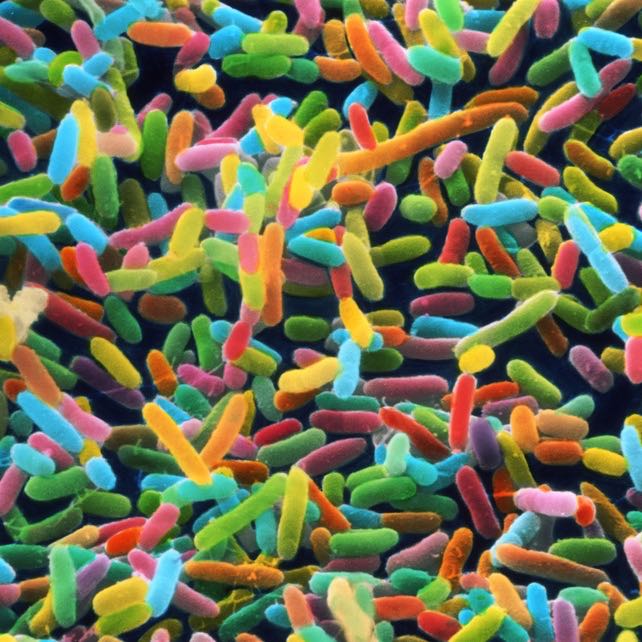
"Great potential..."
- Reviewer, UChicago
The Microbiome Center Workshops
The Microbiome Center Workshops
Principal Investigator: Jack Gilbert, Ecology & Evolution
Funding Type: Workshop
Focus Area: Complexity
Big Idea: Communities of microbes vastly populate every ecosystem on earth yet their identity and function - as a community, and within a host - are poorly understood. The Microbiome Center aims to bring together faculty and scientists across more than 30 departments and divisions and three institutions - The University of Chicago, Argonne National Laboratory, and the Marine Biological Laboratory - in order to understand the identity and function of microbes across environments. This group of diverse scientists bring together unique expertise in modeling, tool development, experimentation, population studies, clinical interventions, and many more. When we bring this group physically together, through workshops supported by BIG, we have the ability to ignite and significantly accelerate early stage research that crosses typical boundaries.

"Novel approach..."
- Reviewer, UChicago
The relationship between literature and knowledge, creativity, and cognition
The Relationship Between Literature and Knowledge, Creativity, and Cognition
Principal Investigator: Dario Maestripieri, Comparative Human Development
Funding Type: Workshop
Focus Area: Complexity
Big Idea: The goal of this workshop is to address the relationship between literary fiction and knowledge, creativity, and cognition. Workshop participants will consider whether literature can be conceptualized as a form of knowledge. As a form of the representation of reality, and therefore like all other forms of representation, literary works function as lenses upon knowledge and as such have a direct relationship to it: but does that mean that they can be conceptualized as knowledge themselves? Workshop participants will also consider whether literature-related knowledge is embodied. If it is, this would imply that the main subject matter of literature – the human experience – is continuous with that of sensory perceptions, thoughts, emotions, and beliefs. This, in turn, implies that literature is a form of cognitive activity, which both is produced by and produces other cognitive activities. Workshop participants will then address the role of pre-existing knowledge and creativity in the production of literature, as well as discuss how literature stimulates cognition and creativity, thus producing new knowledge. We will discuss studies suggesting that long-term exposure to literary fiction improves social-cognitive skills. We will likewise examine the different pathways and mechanisms through which literature can generate and transfer new knowledge.

"Necessary work..."
- Reviewer, UChicago
Safe data: analysis of sensitive data
Safe data: A workshop on paradigms and platforms for safe analysis of sensitive data
Principal Investigator: Ian Foster, Computer Science; Michael Franklin, Computer Science
Funding Type: Workshop
Focus Area: Information
Big Idea: Access to new types of data has revolutionized much of science. Yet that revolution has yet to fully make its way to the scientific study of human beings and their interactions, where progress has been hindered by the legal, technical, and operational obstacles to sharing and accessing sensitive data about individuals. New paradigms and platforms are required to enable sensitive data from different sources to be discovered, integrated, and analyzed in an appropriately controlled manner, while also allowing researchers to share analysis methods, results, and expertise in ways not easily possible today. Our goal in convening this workshop is to bring together a diverse group of experts in the motivating applications that illustrate the opportunities inherent in new approaches; the legal, policy, and ethical frameworks that define the risks associated with inappropriate data release or analyses; and the data management, data analysis, security, and other technologies that determine what can be created. We will charge this group with defining the new principles that may govern the collection and use of data about human subjects in this new era, and with identifying promising new methods, policies, and technologies that may allow for the realization of those principles in different settings.

"Impactful..."
- Reviewer, UChicago
Center for Global Health Workshop
Center for Global Health Workshop
Principal Investigator: Olufunmilayo Olopade, Medicine, Human Genetics
Funding Type: Workshop
Focus Area: Complexity
Big Idea: The Center for Global Health (CGH) supports and develops new interdisciplinary relationships and collaborations that address complex challenges to human well-being, such as those identified in the UN Declaration on Chronic Non-Communicable Diseases (NCDs) and the IHME Global Burden of Disease (GBD). We have identified several areas of specialty (health, environment, governance and economics, and big data science) that are highly interdisciplinary and will enhance collaboration across departments, paving way for the establishment of a University-wide Institute for Global Health. An exciting area of research is the development of an international network of researchers to advance “Big Data Science” in partnership with the Computation Institute and Argonne National Laboratory. In health research, using cloud computing, genome and epigenome sequences can be analyzed to personalize cancer care, a process that can be easily applied to other diseases, such as diabetes, cardiopulmonary diseases, and obesity. Big Data Science can be used to monitor infectious disease outbreaks and to develop a robust interdisciplinary program in metabolism that integrates microbiome, immunology, and metabolomics. The possibility exists to conduct research that informs policy in all four proposed interdisciplinary research areas to implement programs that disseminate recent scientific advances to improve global health and attract funders.

"Bold and topical..."
- Reviewer, UChicago
Enhancing community resilience to traumatic events
Enhancing community resilience to traumatic events
Principal Investigator: Gary An, Surgery; Charles Macal, Argonne National Lab; Jonathan Ozik, Computation Institute
Funding Type: Workshop
Focus Area: Complexity
Big Idea: Urban trauma from violence is perhaps the most dramatic and disruptive type of event that can occur in a community, collapsing multiple scales of factors (social, economic, historical, ethnographic, behavioral, etc.) into a catastrophic personal event localized in space and time. Addressing the complex multi-scale, multi-aspect nature of the pathogenesis of urban trauma requires the integration of these various factors, bringing together a wide range of expertise, perspectives and opinions from researchers, policy makers and community members, each with their own conceptual/cognitive models of the urban environment, various “cites of the mind,” that determine how they view the challenge of urban trauma. This workshop will bring together these stakeholders to design and develop a participatory simulation environment derived from the large-scale, geographically embedded agent-based model, chiSim, which can serve at a unifying platform to integrate the various informational sources, cognitive maps and complex interactions involved in the dynamics of urban trauma. This participatory simulation environment can serve both as rhetorical device, where the consequences of different beliefs and conceptual models can be visualized, shared and discussed, as well as a virtual environment where putative interventions can be explored prior to testing in the real world.

"Innovative approach to discovery..."
- Reviewer, UChicago
Identifying and understanding the complexity of conflict
Complexity and Conflict
Principal Investigator: Ethan Bueno de Mesquita, Harris School of Public Policy
Funding Type: Workshop
Focus Area: Complexity
Big Idea: The big idea proposed is a meeting and collaboration between on the ground practitioners, service providers, academics and policy experts to better understand the complexity of conflict. It will focus on identifying underlying elements that feed into conflict, and specifying the data requirements and practical inputs required to answer the questions that arise from this discussion. The role of open source data versus classified information will also be a central consideration, including the use of a technological platform purpose-built to encourage data sharing between military and civil society groups. This is an important step to harmonize the range of approaches and actions sought by a pool of stakeholders that often fail to properly collaborate on issues for which they share interests. The meeting will help to optimize indicators, minimize bias, and improve the quality of data collected both for academic models, and the way data feed more directly into policy, decision-making and practice in the field. This workshop will provide an opportunity for stakeholders across disciplines engaged in conflict prevention to convene in a more strategic fashion.
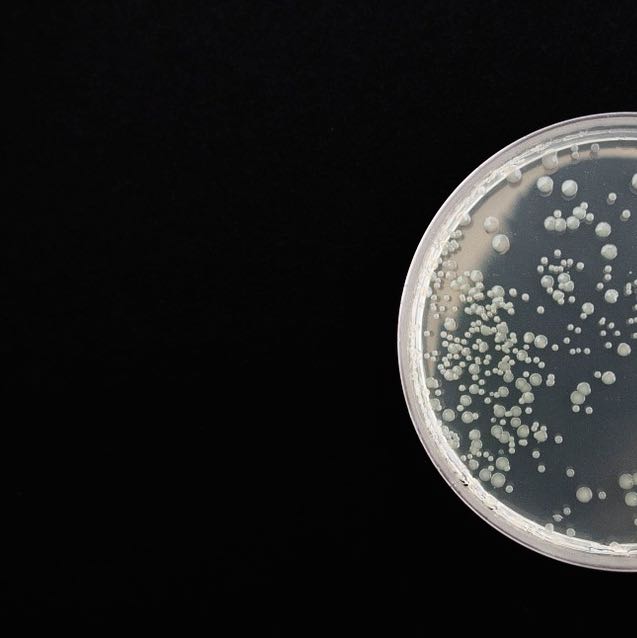
"a great collaboration..."
- Reviewer, UChicago
Identity and function of the microbiome across environments
Identity and function of the microbiome across environments: A collaboratoria of the Microbiome Center
Principal Investigator: Jack Gilbert, Surgery, Microbiome Center
Funding Type: Workshop
Focus Area: Complexity
Big Idea: Communities of microbes - bacteria, viruses, and fungi - are impacting every ecosystem on earth including human bodies, oceans, our homes, and land around us. Because of advances in fundamental and applied science, biotechnology, and computational ability in the last 10 years, we know more about which organisms are living in community – the microbiome - and how those communities interact and develop over time. The Microbiome Center is a new joint center at UChicago, MBL, and Argonne that has emerged to support the diverse community of faculty and scientists who are advancing knowledge about the identity and function of communities of microbes across environments. The Collaboratoria will bring together investigators across disciplines, divisions, and three institutions, in order to find common questions, establish new research partnerships, envision new platform technologies across systems, and share intellectual and technological capabilities for novel purposes.

"Great potential..."
- Reviewer, UChicago
Big Data to Knowledge
Big Data to Knowledge Workshop
Principal Investigator: Jeanne Marsh, School of Social Service Administration
Funding Type: Workshop
Focus Area: Complexity
Big Idea: The Workshop proposed here focuses on complexity, specifically on the use of advanced computational analytics to generate insights from complex data about the biological, behavioral and social processes associated with the utilization and outcome of health services. Data science and big data analytics are needed to develop computational tools that can be applied to large, complex health data in order to address emerging scientific questions in health policy and services. The goals of the workshop are to (1) build on ongoing data science projects in the University, and (2) provide a venue and stimulus for new big data collaborations in health policy and services research.

"Impactful and necessary work..."
- Reviewer, UChicago
Big Influence: Predicting Impact in Science and Technology
Big Influence: Predicting Impact in Science and Technology
Principal Investigator: James Evans, Sociology
Funding Type: Workshop
Focus Area: Complexity
Big Idea: Scientific output has grown exponentially in the last century but has become an information overload for researchers and the institutions that support them. To cope, metrics have been developed to help scientists sift through mountains of literature. Yet, these metrics make claims about the 'centrality', 'impact', and 'influence' of ideas in the literature with no ground truth upon which to rest. Moreover, many funding, promotion, and hiring decisions are made on the basis of these metrics. As a result, many Big Ideas may go unexplored. The Big Influence workshop will bring together leaders in bibliometrics and experts in subfields across science to compare and refine models of influence and impact. But crucially, the first workshop will involve the design of a surprisingly old (but reliable) piece of technology to elicit ground truth: a survey. This intelligent survey will collect researcher level data on A) the work that most influenced an author’s research; B) the ideas that researchers believe will be most influential in their fields in the coming years; and C) the problems and questions that are most crucial to the advancement of or major breakthroughs in their fields from 10's of thousands of researchers. Surprisingly, no such dataset exists.

"An exciting exploration..."
- Reviewer, UChicago
Research Innovation Pipeline in Biological Sciences
Building the Research Innovation Pipeline in Biosciences
Principal Investigator: Marsha Rosner, Cancer Research; Julian Solway, Medicine
Funding Type: Workshop
Focus Area: Information
Big Idea: There is a growing body of scholarship that shows a positive relationship between increases in collaboration, the intellectual diversity of collaborators, and innovation. Yet, the departmental/divisional structure can create a significant barrier to collaboration across academic disciplines. Moreover, the prevailing culture of academic/scientific inquiry stresses a siloed approach that encourages increasing refinement and narrowing of the investigative focus with less diversity of thought. Finally, most established sources of research funding reinforce this model by rewarding the least risky, most clearly defined advances, favoring incremental gains in knowledge at the cost of novel, breakthrough discovery. We will explode this construct by creating an innovation pipeline. We will bring together outstanding academics from a diversity of disciplines around large, complex problems; engage them in brainstorming sessions to generate new ideas and approaches to solve those problems; then further refine these ideas in rigorous, multi‐day workshops. Finally, we will leverage the seed funding resources of the UChicago to bring these nascent ideas to a proof-of‐concept phase, making these innovative solutions competitive for more traditional external funding.

"Fantastic..."
- Reviewer, UChicago
Using Computational Methods in Social Sciences
Center for Data Science & Public Policy
Principal Investigator: Rayid Ghani, Harris School of Public Policy
Funding Type: Workshop
Focus Area: Information
Big Idea: Social scientists are asking new questions, positing new theories, and collecting new types of data. Concurrently, computer scientists are developing scalable, adaptive methods that bring together and analyze data from multiple modalities and sources. These groups have complementary skills that can go a long way in solving critical problems, but they have had little interaction, let alone opportunities for collaboration. This workshop will bring together leaders from both fields to discuss the data, methods, and tools available to them; the problems the data, methods, and tools can be applied to; and specific points of collaboration. Invitees will cover the major sub-disciplines of computer science and social science and include a mix of established scholars who influence their fields today and rising stars who will influence their fields tomorrow.

"An ideal connection"
- Reviewer, UChicago
Biological Complexity: Robustness, Heterogeneity and Adaptation
Robustness, Heterogeneity and Adaptation
Principal Investigator: Marsha Rosner, Cancer Research; John Reinitz, Statistics
Funding Type: Workshop
Focus Area: Complexity
Big Idea: Our initial workshop will focused on central questions of biological complexity: robustness, heterogeneity and adaptation. These processes are interrelated but difficult to understand without mathematical interpretation. However, there is little communication between forefront mathematicians who need to understand key biological issues, and biologists who don't understand what mathematics can contribute. The aim of the workshop is to bring together biologists and mathematicians from the University of Chicago as well as other institutions around the world who are interested in addressing fundamental biological problems. The ultimate goal is to identify significant problems and catalyze productive collaborations that will form the core of a new initiative based at the University of Chicago to mathematically address key aspects of biological complexity.

"Exciting work..."
- Reviewer, UChicago
Genetics: Building Computational Discovery Engines
Big Genetics: Building Discovery Engines
Principal Investigator: James Evans, Sociology
Funding Type: Workshop
Focus Area: Complexity
Big Idea: The BIG grant will launch a series of workshops to bring creative computational and modeling scholars from statistics, machine learning, mathematics, and related disciplines together with the scientists at the helms of big high-throughput, experimental observatories and archival projects in disciplines relevant to the workshop (e.g. Genetics, Energy, Humanities, etc.). We will explore how to accelerate novel discoveries and identify optimal research strategis by taking into account creative computational and modeling approaches to disciplinary knowledge.
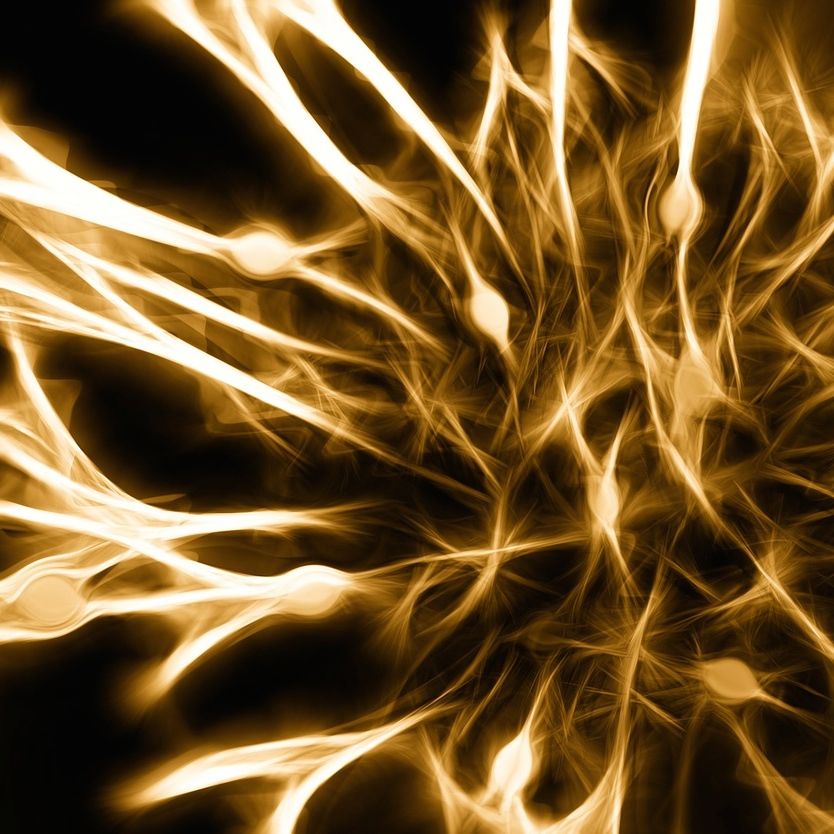
"...has the potential to transform..."
- Reviewer, UChicago
A New Form of Information In the Brain
A new form of information in the brain
Principal Investigator: Dan Margoliash, Organismal Biology and Anatomy
Funding Type: Seed
Focus Area: Cognition
Big Idea: We are exploring a new concept of dynamic information representation in populations of neurons, that can extend our understanding of what information is represented in the stability of a neural network. These ideas arise from observations on the distribution of intrinsic excitation particular neurons recorded in a zebra finch. Modeling studies indicate that the observed variation in these excitations across bird arises from differences in the distribution of principal ionic currents (especially sodium channel currents) in these neurons. We will attempt to use imaging to explore the cellular mechanisms associated with the observed variation.

"...bold and novel..."
- Reviewer, UChicago
The formation, stability and release of trapped environmental gases
Formation, Stability and Release of Environmental Gases from Ice Clathrates/Hydrates
Principal Investigator: Steve Sibener, Chemistry
Funding Type: Seed
Focus Area: Complexity
Big Idea: Glacial ice and permafrost-covered regions of the plant house a huge reservoir of greenhouses gases; understanding the the formation, stability and release of these environmental gases from ice is a crucial topic of fundamental importance for climate change. Using energetic ballistic embedding and infrared spectroscopy, this project will examine the kinetic and thermodynamic processes associated with these trapped greenhouses gases and give greater insight into the nature of the molecule-ice interactions and the fate of the gases upon warming

"...has the potential to transform..."
- Reviewer, UChicago
Brain Dynamics and Stability
Perceptual brain dynamics and the stability of sensory information
Principal Investigator: Leslie Kay, Psychology
Funding Type: Seed
Focus Area: Cognition
Big Idea: Contrary to belief about sensory information, most of the sensory activity we receive from outside our brains is not an objective representation of the outside world. Brain regions that receive direct sensory input (thalamus and olfactory bulb) receive more input from higher order areas of the brain than they do from the outside world. Accordingly, neurons that receive primary sensory information respond to many more things than just the sensory stimulus; they are strongly modulated by ongoing processes in the brain. By measuring contributions of these higher order processes through a variety of methods, we will quantify the respective contributions of peripheral and central areas in their dynamic cooperation producing an emergent perceptual state, enabling us to think about sensory information in a new way, as a dynamical state produced by multiple brain areas.

"...a game-changing idea..."
- Reviewer, UChicago
Disorder-Based Design
Harnessing Complexity: Disorder-based Design
Principal Investigator: Sid Nagel, Physics
Funding Type: Seed
Focus Area: Complexity
Big Idea: Disordered materials can have highly unusual elastic response to external stimuli. This flexibility in response can lead to exciting opportunities to create materials with new properties. Most recent activity has been devoted to elucidating these newly discovered laws but there has been much less effort in trying to understand how to use these properties of disordered matter to produce structures with unique and tunable responses. Our goal is to show that materials and structures based on disorder can be tuned to create new functional designs that can be used for material assemblies on all length scales - from biology all the way to architectural scales.

"Bold as Brass..."
- Reviewer, UChicago
Constraining Nonlinearity in Earth’s Climate
Constraining Nonlinearity in Earth’s Climate
Principal Investigator: Dorian Abbot, Geophysical Sciences
Funding Type: Seed
Focus Area: Complexity
Big Idea: Climate is a high-dimensional chaotic system that exhibits complex behavior, but has previously been approximated as linear. Lurking in this complexity is the possibility of nonlinear global warming as CO2 is released, which would radically worsen damage estimates and provide a stronger economic argument in favor of global action to combat climate change. We propose to carefully evaluate the potential for nonlinear behavior in climate, using a hierarchy of numerical climate models. This hierarchy will include a global model that cannot resolve clouds and convection, and a cloud and convection model that cannot be run globally. This work aims to challenge the widely-held belief that linearity underestimates the risk of high warming and transform the state of the field by determining the nonlinearity of climate.

"...unique..."
- Reviewer, UChicago
The Lunar Cycle, Social Isolation and Sleep Quality
The lunar cycle, perceived social isolation and sleep quality
Principal Investigator: Greg Norman, Psychology; Marc Berman, Psychology
Funding Type: Seed
Focus Area: Complexity, Cognition
Big Idea:
A robust relationship between perceived social isolation and sleep quality have been found in humans. It is thought that this relationship may be a compensatory response to an increased risk of predation or attack during sleep when one may not be able to benefit from the safety associated with being integrated within a larger social unit. Recent evidence shows that sleep quality fluctuates with the lunar cycle, such that full moon is associated with diminished sleep quality. Some have argued that this relationship is also a compensatory mechanisms associated with increased predation risk. This project will evaluate the extent to which loneliness-induced changes in sleep quality are influenced by the lunar cycle.

"...enormous potential for societal impact..."
- Reviewer, UChicago
Building an Intervention Strategy to Increase Student Achievement
The UChicago Science of Learning Network: A Research-Practice Collaboration to Improve Student Achievement in Urban Schools
Principal Investigator: Susan Levine, Psychology; Sian Belock, Pscyhology; Amy Claessens, Harris
Funding Type: Workshop
Focus Area: Information
Big Idea:
Combining insights from research on learning with practitioners’ knowledge of school and classroom contexts holds great promise as a strategy for intervening to increase student achievement. However, the field lacks the necessary infrastructure to support exchange between school practitioners and researchers who study learning. We propose to create a social network that integrates knowledge from research on the science of learning with the expertise of accomplished school practitioners to generate solutions for improving the academic performance of urban students. The distinctive contribution of the proposed network will be to build a social foundation for research that integrates knowledge from these disparate disciplines. We will convene monthly conversations among University of Chicago researchers, school-level leaders, and four classroom teachers, each focused on a different aspect of student learning in grades PreK-2. The discussions will examine how research on learning can inform the design of new interventions to increase achievement for disadvantaged urban students in the core subject areas of language/literacy and mathematics. These conversations will result in an agenda for new collaborative research comprised of a small number of compelling interventions that can be tested, refined, built into daily practice, and shared with others.

"...will significantly change the way we think..."
- Reviewer, UChicago
Limits to Modeling and Prediction
Limits to Modeling and Prediction
Principal Investigator: Robert Rosner, Astronomy & Astrophysics
Funding Type: Workshop
Focus Area: Information, Complexity
Big Idea: Many of today’s most controversial issues facing public policy – from climate change to vaccination to effective STEM education – revolve around the question of how certain the practitioners are in their predictions, as well as how effective these practitioners are in accurately (and convincingly) portraying their conclusions in the public realm. We will host a workshop focused on how various disciplines, from the natural to the social sciences, deal with uncertainty. By bringing together scientists, lawyers and policy makers who have dealt with such issues, we aim to explore and build connections that can improve our common understanding of uncertainty as well as its explication to the public.

"...fresh and exceedingly bold..."
- Reviewer, UChicago
Examining Patterns of Whole-Brain Neural Synchrony to Define Cognitive Potential
How whole brain neural network connectivity predicts learning potential
Principal Investigator: Sarah London, Psychology; Marc Berman, Psychology
Funding Type: Seed
Focus Area: Complexity
Big Idea: The same experience is not always equivalently learned within and across individuals, suggesting that neural circuits shift between states that permit or limit the possibility of learning. We investigate the properties of neural circuits that regulate their receptivity to experience. Using an animal model that naturally undergoes fluctuations in the ability to learn from an experience, the zebra finch songbird, we examine patterns of whole-brain neural synchrony to define network properties associated with cognitive potential. In our proposed research we combine whole-brain connectivity network metrics with measures of learned behavior. With this combinatorial strategy, we can directly relate changes in brain network function with transitions through learning potential states within an individual. Results further our long-term goal to understand the accuracy of patterns of neural networks to predict an individual’s potential to learn from the current environment.

"...groundbreaking and important new idea..."
- Reviewer, University of Illinois, Urbana-Champaign
Single Cells as the Building Blocks for Active Matter
Cell-Based Active Matter from Controlled Spatio-Temporally Design and Interactions
Principal Investigator: Norbert Scherer, Chemistry; Louis Philipson, Endocrinology
Funding Type: Vision
Focus Area: Complexity
Big Idea: Can one rationally create tissue with specific functions or functional properties that differ from those found in nature? From a functional materials perspective, can one create active matter - tissue built from functionally and spatially patterned cells of different types - with new functions in space and time? The goal of this proposal is to design and fabricate cell-based active matter that is inspired by properties and materials in the physical world. The multicellular nature of the proposed materials makes them a tissue. The tissue will have a hierarchy of functional elements: single cells as the basic building blocks; collections of spatially adjacent cells, termed “meta-cells”, that will have tunable properties; longer scale interactions amongst meta-cells and programmable stimuli on various spatial and temporal scales. We will focus on creating a new function for known cell types - additivity of response vs. the bistable “all or nothing” response of interacting collections of insulin secreting beta cells - such that chemical signaling and chemical wave propagation can exhibit interference effects that are intrinsic in optics, the wave properties of light and water waves.
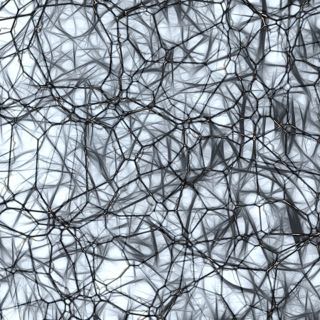
"...extremely novel...enormous advantages..."
- Reviewer, SUNY
Emergent Properties of Neuronal Networks
Emergent properties of neuronal networks: The next frontier in understanding brain function
Principal Investigator: Wim van Drongelen, Pediatrics
Funding Type: Vision
Focus Area: Complexity
Big Idea: This (BIG) idea is to create a novel approach to fundamentally change the way neuronal networks can be controlled and investigated. We will develop a tool to study networks by allowing an experimenter to accurately dial neuronal network properties and monitor effects on neural activity in real time. We specifically address the lack of techniques to perturb and control network connectivity with sufficient temporal precision, spatial resolution, and spatial range by employing a combination of technologies: real-time digital signal processing (DSP), digital light projection (DLP), and microelectrode arrays (MEAs). We have successfully developed a limited prototype device, and this proposal will allow us to complete our tool, which has been repeatedly been considered too high risk by different funding sources, and jump-start our research on network mechanisms underlying seizures and strategies to abort them.

"...a fascinating question..."
- Reviewer, UPenn
What Sleepy Nematodes Can Teach Us About Humans
Does inadequate sleep have long-term impact on the simplest of (nervous) systems?
Principal Investigator: David Biron, Physics
Funding Type: Vision
Focus Area: Cognition
Big Idea:
Sleep is widely recognized as important yet it is poorly understood. During development, neurons must connect correctly with their synaptic partners. Adequate sleep is crucial for this process. Disruptions to sleep are common during childhood and adolescence and undermine health and emotional, cognitive, and social development. Our goal is to understand key conserved mechanisms connecting sleep and appropriate development. A simple system could provide foundational insight into this complex problem. The nematode Caenorhabditis elegans offers genetic tractability and an easy-to-manipulate nervous system. We hypothesize that disrupting nematode sleep will cause lasting functional deficits. However, nematode sleep is controversial and the consequences of deprivation have been minimally explored. We propose a stepping-stone to understanding how complex interactions between sleep and development evolved and may be conserved.
With the long hour culture becoming increasingly prevalent, understanding sleep will affect life style choices and workplace policies, thus promoting personal and societal progress. Evidence for economic and social costs of insufficient sleep is abundant but does not easily alter habits and policies. Sleeping nematodes rarely fail to grab attention at all ages and serve as an excellent conversation starter about sleep. A simple model can therefore literally and figuratively change the way we think.
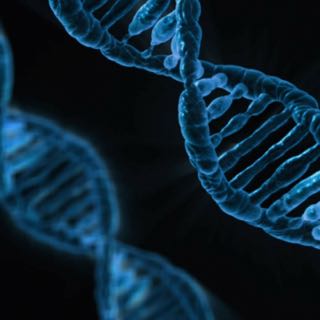
"Exciting and important..."
- Reviewer, Northwestern
Challenging the "One Gene-One Polypeptide" Hypothesis
A global search for transcription factor-coupled bicistronic genes: Complexities in human development and genetic disease explained
Principal Investigator: Christopher Gomez, Neurology
Funding Type: Vision
Focus Area: Complexity
Big Idea: Our work challenges the “One gene-one polypeptide hypothesis” proposed by George Beadle and Edward Tatum. We have found that some genes expressed in human cells make two proteins, rather than one, as proposed by Beadle, using mechanisms once attributed only to viruses. Making two proteins together allows one to be dedicated to a principal cellular function such as ion channel protein, while the other protein (called a transcription factor) can work to orchestrate the activation of other genes necessary to function with the principal protein. This provides a tremendous layer of efficiency and helps avoid the problem of key proteins appearing at the wrong time in the cell. However, because they control expression of a wider assortment of proteins, disease mutations of these dual-protein genes may result in more complex genetic diseases. In this study we will determine the extent of these dual-protein (bi-cistronic) genes in cells, confirm them experimentally, determine the target genes that they regulate. Our long range plan will be to identify novel transcription factors that are made together with the principal proteins, and to express them in transgenic mice, so we can separate the contributions of the two proteins to the complex phenotype of complete knockout mice.
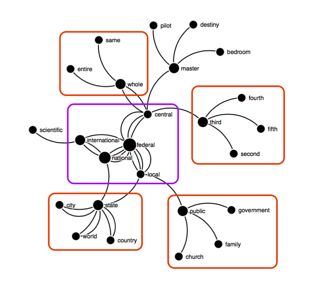
"Ambitious and significant"
- Reviewer, UChicago
Putting a Conscience Into the Language-Learning Algorithm
Putting a conscience into the language-learning algorithm
Principal Investigator: John Goldsmith, Linguistics & Computer Science
Funding Type: Seed
Focus Area: Information
Big Idea: Every language is hard to learn, but every language is learnable. The central task of linguistic theory is to make such a learning algorithm explicit, providing an account of how words, word-internal structure, and grammar can be induced from a finite amount of data. We propose to use parallel learning algorithms for these three aspects of language learning, allowing each component to share its hypotheses with the other two in order to take advantage of epistemologically low-hanging fruit. We will integrate computational methods that have been developed for each of these problems, and develop a "Conscience'' that will oversee the sharing of tentative conclusions across the three separate components. The result of the project will be open source Python code to analyze natural language transcription, allowing us to implement our theoretical ideas into code and applications that can be tested by a wider community of researchers.
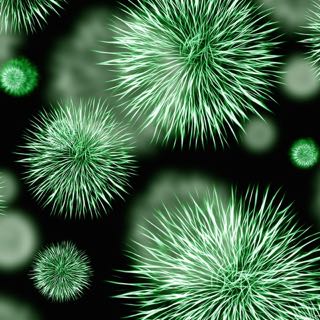
"...a unique contribution..."
- Reviewer, Tufts
Stolen Genes: The Pressures of Being a Pathogen
How do pathogens emerge?
Principal Investigators: Howard Shuman, Microbiology; Linda Amaral Zettler, Marine Biological Laboratory
Funding Type: Vision
Focus Area: Complexity
Big Idea: The origins of human infectious diseases are complex and new pathogens continuously emerge and evolve. How microorganisms become pathogens is poorly understood. There are two types of human pathogens; pathogens that co-evolved with humans for extended periods and others, “emerging pathogens”, that are not known to cause disease in people until a particular set of circumstances occurs that results in a newly recognized infectious disease. The current paradigm for understanding how pathogens evolve is based on the “Red Queen” concept of hosts and pathogens constantly adapting to each other’s genetic changes in a molecular arms race of compensatory genetic changes. However, the Red Queen may not be appropriate for explaining emerging and opportunistic infectious diseases. Our early data suggest that the “Stolen Gene Model” - continual horizontal acquisition of genes that are subsequently modified by selection to serve as virulence genes – may present a more accurate picture of pathogen emergence. In this project, we will rigorously examine genomic and transcriptomic data, establish bioinformatics pipelines to better understand this emerging model and the nature of the selective pressures that account for the acquisition and maintenance of these “stolen” eukaryotic genes.

"...cutting edge.."
- Reviewer, U Pittsburgh
Understanding How Neurons Give Rise to Perception, Cognition, and Action
High density optical neural recording in motor cortex of the behaving marmoset
Principal Investigator: Nicho Hatsopoulos, Organismal Biology & Anatomy
Funding Type: Vision
Focus Area: Cognition
Big Idea: One of the fundamental problems in neuroscience is to understand how populations of neurons give rise to perception, cognition, and action. Calcium fluorescence imaging (CFI) provides the opportunity to densely sample the spiking activity of thousands of neurons at the scale of a single cortical column, which is considered to be the basic computational module of the cortex. To date, CFI methods have relied on rodents who are head-restrained because the microscope is large and rigidly attached to the room. We are proposing to use a novel, miniature fluorescence microscope that can be attached to the skull, allowing for head-free, unconstrained movements of the arm of a marmoset monkey performing a natural, foraging task. By imaging and characterizing the encoding properties and functional connectivity of these neurons, we will be able to better understand large-scale, spatiotemporal patterns of neural activity in cortex code information about behavior.

"...Tremendously exciting..."
- Reviewer, University of Washington
Overturning the Current Model of Axon Myelin Sheath Assembly
Emergence of Structure in the Central Nervous System: A Challenge to the Current Model of Axon Myelin Sheath Assembly
Principal Investigators: Sara Szuchet, Neurology; Gregory A. Voth, Chemistry; Ka Yee Lee, Chemistry
Funding Type: Vision
Focus Area: Cognition
Big Idea: The critically important myelin sheath is a complex multi-membrane structure synthesized in the central nervous system by oligodendrocytes (OLGs). The sheath envelops axons and is a facilitator of rapid nerve conduction, also implicated in diseases such as multiple sclerosis. The prevailing hypothesis is that OLGs extend a process that upon circumnavigating the axon multiple times generates the multilayer myelin structure – a notion that has persisted for over 50 years. Using long-term OLG cultures we have recently observed the presence of “dark structures” accumulating in their cytoplasm. We found them to consist of tubules, and that there is an emergent transition of these tubular structures into a multilamellar organization not unlike the myelin sheath. We therefore challenge the prevailing concept of myelin sheath formation by advancing three bold new hypotheses: 1) myelin membranes (MyMs) exist as independent entities; 2) they are packaged and transported in special organelles; 3) the myelin sheath is generated by the fusion of MyMs. Confirmation of these hypotheses would represent a major landmark for neuroscience – in health and disease – and in cell biology and biophysics.

"...identifies a critical gap..."
- Reviewer, UC Berkeley
Brain Mechanisms of Visual Recognition and Attention
Coordination of parietal and temporal cortices for visual recognition and attention
Principal Investigator: Dave Freedman, Neurobiology
Funding Type: Vision
Focus Area: Cognition
Big Idea: This project aims to understand the brain mechanisms that underlie the coordination of visual recognition and attention, functions which are known to rely on neuronal processing in temporal and parietal brain areas. While most work in cognitive neurophysiology examines neuronal activity in isolated cortical areas, this project aims to move toward a larger scale understanding of brain-wide neuronal circuits. To do so, we will employ a combination of neurophysiological, imaging, and behavioral approaches to examine the mechanisms by which activity is coordinated between temporal and parietal cortices during performance of visual recognition and attention tasks. Diffusion tensor imaging will be used to identify neuronal fiber pathways throughout the brain, revealing direct anatomical interconnections between subregions of parietal and temporal cortices. This anatomical information will be used to guide neuronal electrode recordings toward interconnected cortical areas, revealing the patterns of interactions and information flow between neuronal ensembles during complex visually-guided behavior.

"Bold and conceptually significant..."
- Reviewer, UChicago
Redefining Sensory Information in Perceiving Brains
Redefining sensory information in perceiving brains
Principal Investigator: Leslie Kay, Psychology
Funding Type: Seed
Focus Areas: Cognition, Information
Big Idea: Contrary to belief about sensory information, most of the sensory activity we receive from outside our brains is not an objective representation of the outside world. Brain regions that receive direct sensory input (thalamus and olfactory bulb) receive more input from higher order areas of the brain than they do from the outside stimuli. Accordingly, neurons that receive primary sensory information respond to many more things than just the sensory stimulus; they are strongly modulated by ongoing processes in the brain. In this project, we will measure contributions of these higher order processes on relay neuron responses in the olfactory bulb by selectively silencing input from individual brain areas using opotogenetics (light that activates inhibitory or excitatory events). By carefully controlling input from the cortex and hippocampus during olfactory exercises in rats, we will quantify the respective contributions of higher order areas and be able to determine whether there is an early objective component that is stable regardless of central input. These data will enable us to think about sensory information in a new way, as a product of peripheral and central processes that can now be quantified.

"...big value..."
- Reviewer, UChicago
The Nature and Extent of Post-reward Crowding-out
The Nature and Extent of Post-reward Crowding-out
Principal Investigator: Oleg Urminsky, Booth
Funding Type: Seed
Focus Areas: Complexity, Information
Big Idea: While incentives can have a powerful influence on behavior, research on intrinsic motivation has suggested that rewards can crowd-out task interest, reducing engagement when rewards are withdrawn. This research has resulted in widespread skepticism among practitioners and academics alike about using incentives in behavioral interventions. Recent field studies examining the long-term effects of temporary incentives have, however, failed to document negative effects. Using repeated moment-to-moment measures, our initial studies reconcile these two disparate findings, documenting a robust short-lived crowding-out effect that happens immediately after the reward is withdrawn (“momentary crowding-out") but no long-term negative effect of incentives. Using controlled lab studies we plan to investigate the mechanism behind this short-term crowding-out, ways to prevent it, and how it can inform the theories of intrinsic motivation. We also plan to investigate the real-world effect of ending an incentive in the field. We believe that this research has the potential to help resolve the debate about use of incentives in policy, and fundamentally alter how and when incentives are used to change behavior and improve social outcomes.

"Innovative, creative, and collaborative"
- Reviewer, UWMadison
Do most of our genes regulate the growth of our community?
Towards Microbial Community Genetics: Rethinking Gene Function in an Ecological Context
Principal Investigators: Maureen Coleman, Geophysical Sciences ; Sean Crosson, Biochemistry and Molecular Biology
Funding Type: Vision
Focus Areas: Complexity, Information
Big Idea: Bacterial genetics has long sought to link specific DNA sequences (genes; the information) with their biological functions. Emerging high-throughput methods have led to an astonishing result across several well-studied model organisms: the vast majority of genes are not required for growth. Despite this, many sequence families remain conserved across unrelated bacterial species that occupy a given environment - strong indications that these sequences provide vital fitness advantages in a given environmental context. We propose that this vast unknown genetic reservoir plays an essential biological role in providing a blueprint for the emergence of complex, stable ecological communities. In our project, we will quantify the effects of gene disruption on the fitness of model bacteria, grown both in isolation and in the context of bacterial communities. With this work, we aim to bridge a disciplinary gulf and to advance a new conceptual and experimental framework for understanding how microbial communities function.
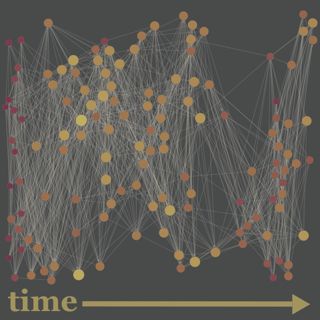
"Transformative to neuroscience"
- Reviewer, UCLA
The 4th Dimension of the Brain: Time in Neural Computation
From neural circuits to computation
Principal Investigators: Stephanie Palmer, Organismal Biology and Anatomy ; Jason MacLean, Neurobiology
Funding Type: Vision
Focus Areas: Cognition, Information
Big Idea: Understanding what and how neural circuits compute is the central question of modern neuroscience. Several current approaches view neural circuits as stationary sets of connection weights, whereas our work focuses on the time evolving activity in the brain. We postulate that the computational structure in the brain is contained in these dynamics rather than the fine details of static neuron-neuron connections. We further hypothesize that the structure of these dynamics implement both priors and approximations the brain has implemented over evolutionary time to best represent and react to stimuli from the environment. That is, they perform approximate computations that are optimized for the particular structure of inputs they receive, shaped by the organism’s ecological niche. By making large-scale recordings of circuit dynamics in primary visual cortex in the intact brain, we will analyze and detect computational structure from the circuit activity as the inputs change in real time. By showing both standard artificial stimuli as well as clips from our database of natural motion video, we will infer what features of neural dynamics encode the unique statistics of the natural visual world. Additional experiments will allow us to to show how a neural circuit adjusts what it computes via dynamic changes in its activity.

"Tremendously exciting, novel, and transformative"
- Reviewer, MIT
Design by Disorder: Artificial Evolution of Materials
Harnessing Complexity: Evolutionary design of disordered materials
Principal Investigators: Heinrich Jaeger, Physics ; Sid Nagel, Physics
Funding Type: Vision
Focus Area: Complexity
Big Idea: Structural disorder gives rise to a vastly richer set of possibilities for tuning a material than is available with ordered systems; recent research has shown that, unlike in ordered systems, local interactions in disordered materials can be tuned independently of each other to control the global response of a system. However, such a relationship is often too complex to be practical. While disordered materials possess many unique and highly desirable properties, the complexity arising from disorder can often form a bottleneck for fruitful applications. How does one manipulate disorder to produce the type of material and the properties that are desired? In this BIG project, we strive to harness structural complexity and combine it with principles across different fields, from biology to physics to architecture, to design adaptive systems that are robust and tolerant to changes in the environment within which they function. This project was first funded as a BIG Seed Project in Spring 2014, then grew into Vision for Winter 2014.

"A unique and powerful perspective..."
- Reviewer, UChicago
The Autocatalysis of Language Evolution
The autocatalytic evolution of language
Principal Investigator: John Padgett, Political Science
Funding Type: Seed
Focus Area: Complexity
Big Idea: A path-breaking concept in the literature on the origins of life, autocatalysis is the chemical foundation of life. We have extended this particular “living networks” perspective to social, political and economic systems in order to understand the emergence of organizational novelty in numerous historical settings—(a) the rise of capitalism in Western Europe [in particular, Italy, Netherlands and Germany], (b) the fall of Communism and post-Communist reconstruction in Soviet Union, China and Hungary, and (c) the emergence of the biotechnology industry in the U.S. Previously, we have developed the concepts of production and biographical autocatalyses. The next step is linguistic autocatalysis. My approach is to recognize, but not to emphasize, the distinctiveness of human linguistic systems as compared with “lower order” (but still complex) cellular signaling and insect and animal communication. I want to construct abstractions rooted in autocatalytic production that span communication systems, thereby identifying specific steps involved in language evolution.

"Awesome..."
- Reviewer, UChicago
Foster Care as an Ecosystem: Insights from Population Biology
Population theoretic constructs as applied to complex human built systems
Principal Investigators: Stefano Allesina, Ecology and Evolution ; Sarah Cobey, Ecology and Evolution ; Fred Wulczyn, School of Social Service Administration
Funding Type: Seed
Focus Area: Complexity
Big Idea: The proposed study will test the idea that tools used by population biologists to study complex ecological systems can be used to better understand human-built systems - such as the child welfare system. Among other things, the child welfare system provides alternative living arrangements for children who cannot live at home. Typically, insight about the underlying system is derived from studies that examine individual lives. What is bold about our study is that, although micro-level studies of individual experiences are useful, they do not reveal much if anything about the hidden states of the underlying dynamical system. If we are correct, a deeper understanding of the hidden dynamics will offer ways to control complex human-built systems more efficiently, with a return measured as improved human well-being.
First, we will leverage a large database used to track admission and discharge processes, which are analogous to birth and death processes found in classical population dynamic models. The available data, which represent significant public investment, have never before been used to explore the hidden dynamics embedded in the population time series. Second, because the data span many decades and pertain to multiple ecological contexts, the data can be used to understand how the underlying systems evolve over time and in relation to the environment. Finally, the insights gained will allow us to understand how a complex system can be modified, through policy and other mechanisms, so as to improve human well-being.

"Very exciting..."
- Reviewer, UChicago
How Numbers Change Our Mind
How language transforms mind and world
Principal Investigators: Daniel Casasanto, Psychology ; Susan Goldin-Meadow, Psychology
Funding Type: Seed
Focus Area: Cognition
Big Idea: Does language shape the way people think? For nearly a century, the consensus among linguists, philosophers, and psychologists has been: No. Although the world’s 7000 languages differ in myriad ways, the concepts filling their speakers’ minds are the same, universally. In this project we will challenge the dogma of the Universal Mind by investigating a conceptual domain in which language may have transformative effects: numerical cognition. People acquire number concepts early in their lives — but only, we hypothesize, if they are exposed to counting words. To test this hypothesis, we will investigate the counting abilities of cognitively normal adults who, due to early deafness, were not exposed to any counting words in language during childhood. Previous studies suggest these adults may be unable to conceptualize exact numbers greater than three. The first phase of our study will determine whether these people are profoundly innumerate, as they appear, or whether earlier tests have missed hidden numerical competencies. According to our hypothesis, in the absence of number words these adults will be unable to reason about numbers in ways that are child’s play for most hearing (or sign-language using) kindergarteners: we predict they will be unable to distinguish four apples from five apples, indicating that basic numerical competence is not a human universal.
The second phase will determine whether language plays a causal role in creating the kind of exact number concepts we can use, like four, fourteen, and four-million. We will attempt to endow innumerate deaf adults with numeracy. Training will include counting words in the “language” treatment group, but not in the “no-language” control group. If only the “language” group acquires number concepts, this will demonstrate a critical role for language in the development of a new cognitive capacity: one that not only changes our minds, but has also transformed the world. Our technological society depends on exact number, which may in turn depend on counting words. If so, this will be the most important influence of language on cognition ever discovered. Alternatively, if both groups become numerate, this will prove that language is not needed for number acquisition, falsifying a bold claim about the role of language in conceptual development — but also showing for the first time how innumerate adults can be trained to become numerate. This study aims to explain how minds can differ almost unimaginably across groups of people, and to identify the experiential factors that contribute to cognitive diversity, enabling humans to exceed their innate cognitive endowment.

"Highly ambitious."
- Reviewer, UChicago
Keeping Time: The Evolution of Circadian Clocks
How do circadian clocks evolve?
Principal Investigator: Michael Rust, Molecular Genetics and Cell Biology
Funding Type: Seed
Focus Area: Complexity
Big Idea: Biological systems consist of networks of interacting components that have been shaped by evolution. A key feature of these networks is that complex functions emerge from the simpler interactions of the components. A concrete example of emergent function is the circadian clock, a ~24 hour rhythm in gene expression that allows organisms to anticipate daily changes in the environment. None of the molecular components of the clock oscillate in isolation - rhythms emerge only from the full network of interactions. Very little is understood about how evolution can produce complex systems of this kind, where the function of each component depends on its context in a strongly interacting network. Our goal is to experimentally determine evolutionary paths that can alter a system’s dynamics and cause oscillatory behavior to emerge. We are exploiting the experimental power of the simplest known bacterial circadian clock, where a small network of three proteins is responsible for generating rhythms. Understanding the mutational sensitivity of this network and its response to environmental fitness pressures will give us an unprecedented view of how random mutation and selection act to build complex biological systems.
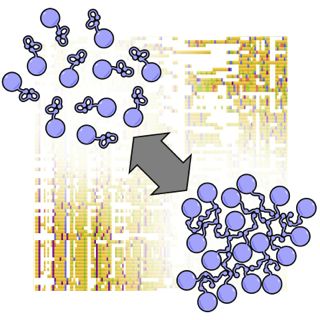
"Significant long-term impact on the field."
- Reviewer, UChicago
Sequence vs Context: A Top-down Approach to Protein Network Coevolution
Evolving adaptive protein assembly
Principal Investigator: D. Allan Drummond, Biochemistry & Molecular Biology, Human Genetics
Funding Type: Seed
Focus Area: Complexity, Information
Big Idea: This work will fundamentally alter our understanding of how protein self-assembly is encoded in protein sequences, and will constitute a major step forward in understanding how a precise complex system evolves and coevolves. Based on the enormous success of structural biology, we think of functional protein assemblies as being highly ordered and specific. Protein components have amino-acid sequences which evolve under tight constraints—little variation in length, preserving the sequential order of amino acids—to fold into structured subunits that assemble in a puzzle-like manner. The central technique used to analyze evolution is a sequence alignment across species. We have found that functional protein assemblies are formed in many cases using protein sequences that evolve under a very different set of constraints. Over evolutionary time, these so-called low-complexity regions (LCRs) vary widely in length and amino-acid ordering, but show strong constraints on composition, which varies in a periodic way across sequences. These sequences are unalignable; attempts at alignment produce nonsense. Yet their evolution mirrors their function in assembly formation, linking many molecules together using individually weak connections.
"A big, transformative idea."
- Reviewer, UChicago
Does mate selection start in the retina?
Complex visual discrimination in the insect brain
Principal Investigators: Stephanie Palmer, Organismal Biology and Anatomy ; Marcus Kronforst, Ecology and Evolution
Funding Type: Seed
Focus Area: Information
Big Idea: Complex decision-making is usually thought to be the domain of humans or at least mammals, but more and more evidence reveals that even insects are capable of this kind of computation. Paper wasps display a form of facial recognition, honeybees can perform exquisite color pattern discrimination and monarch butterflies can navigate accurately over thousands of miles. Our hypothesis is that we can make progress understanding the enormous complexity of the human brain by starting with these simple systems, which nonetheless perform amazing computations. Heliconius butterflies select mates based on visual patterning cues on their wings, and display a form of reproductive isolation by carefully using this selection to exclude mates with only minor pattern variations. My lab has recently begun a project to investigate the neural underpinnings of mate selection bias in butterflies. We are recording the spectral sensitivity in the photoreceptors of the live butterfly eye and from neurons further downstream in the color vision pathway. Our SEED grant will fund the building of a UV/blue/green reflected light display, to mimic more closely the natural color input to the butterfly visual system.

A Sticking Point: Cell Adhesion and Signaling in Brain Development and Disease
Understanding how extracellular adhesion couples to intracellular signaling
Principal Investigator: Demet Arac-Ozkan, Biochemistry and Molecular Biology
Funding Type: Seed
Focus Area: Complexity
Big Idea: Disease often takes a visible external toll on humans but there is often intricate internal damage occurring, as well. Cellular mechanisms that are crucial for development and function can also be manipulated and disrupted due to disease. One such case involves the communication system of cells in multicellular organisms. These cells communicate through a complex combination of cellular adhesion and cellular signaling, but the adhesion proteins that are connected to this phenomenon have also been linked to both brain function and disease. The exact structure and regulatory mechanisms of these proteins are not well known, but may be the key to both disease control and a normal functioning brain. Initial studies from this proposal by Demet Arac-Ozkan will endeavor to elucidate the structure of these receptors. Clarity into the structure of these proteins will be key to understanding the functionality, thus providing the framework for a more precise understanding of the mechanism by which the disease attacks. These findings can then lead to development of new drugs for both currently known diseases that act by manipulating these areas, such as certain brain diseases, as well as provide insights into methods of protection against a wide array of other diseases with similar disruption mechanisms.

Are Normal Cells Genetically Identical?
Are Normal Cells Genetically Identical?
Principal Investigator: Yuan Ji, Department of Health Studies
Funding Type: Seed
Focus Area: Complexity
Big Idea: Most current biological research makes one crucial assumption: healthy tissue samples are homogenous, containing groups of cells with similar DNA. New evidence suggests that this assumption may not reveal a complete picture, and a single biological sample may actually contain different cells types with different genomes. Tumors provide the best recognized example of this genomic variance, exhibiting this type of heterogeneity among cells in the same tumor, but what if it could be found in other cells, also, such as normal human cells? Little is known about this emerging phenomenon, but the implications are profound; a deeper understanding could lead to both more specific research techniques as well as better knowledge of the causes and progression of various diseases in which this same heterogeneity is exhibited. Using a combination of novel sequencing and robust statistical models, a proposal from Yuan Ji strives to pursue this theory with samples extracted from healthy individuals. Once the progression and degree of this heterogeneity is better understood, research can focus more on individual cells rather than homogenous samples, providing better differentiation, giving rise to more precise disease diagnosis and prognosis, and resulting in more complex and diverse data.
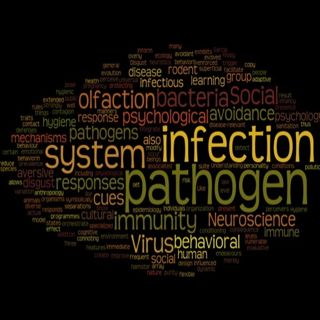
Immune Response Drives Behavior: How Pathogens Can Kill Your Social Life
The relationship between the behavioral and physiological immune systems
Principal Investigator: Greg Norman, Psychology
Funding Type: Seed
Focus Area: Complexity
Project: Individuals are exposed to a constant barrage of internal and external stressors, ranging from day-to-day social stress to the threats associated with infection and disease. The nervous system is in continuous reciprocal communication with the immune system and this allows for organized physiological and behavioral responses to potential sources of infection. However, it remains unclear whether the neural and behavioral response to potential infection varies based on the type of pathogen threat the organism is exposed to (e.g. bacterial vs. viral). This proposal will explore the ability of non-human animals to differentiate stimuli from conspecifics that have been exposed to compounds simulating a viral or a bacterial infection, and the potential influence of social interactions on the behavioral response to these pathogens cues. Such research has the potential to provide insight into the relationship between the neurobehavioral mechanisms underlying pathogen avoidance and serve as a basis for future work on interactions between the nervous and immune systems.

Brain Stimulation to Turn a Negative Memory Neutral
Improving the Past with Electrical Brain Stimulation
Principal Investigator: David Gallo, Psychology
Funding Type: Seed
Focus Area: Cognition
Big Idea: This project determines the extent that electrical brain stimulation can influence our ability to recollect emotional experiences. Recent research shows that applying mild transcranial direct-current stimulation (tDCS) to specific regions in prefrontal cortex can temporarily boost people's cognitive abilities. By combining this technique with an emotional memory task, Dr. Gallo will test the hypothesis that electrical brain stimulation can help people selectively retrieve positive memories and inhibit negative memories. He also will test the duration of this effect, or the extent that the induced emotional memory bias will persist even after the brain stimulation session has ended. If successful, this project will provide a new technique for artificially manipulating emotional memories, launching a larger investigation into the neurocognitive mechanisms and practical applications of such memory interventions.